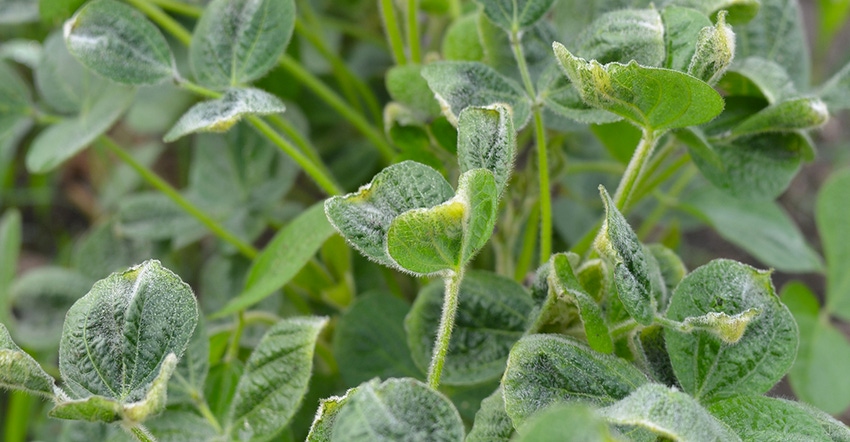
Minnesota famers who planted dicamba-tolerant soybeans must apply dicamba by June 20, according to state law. Dicamba works best on broadleaf weeds less than 4 inches tall.
New restrictions were placed on the herbicide for 2018 after the Minnesota Department of Agriculture received widespread reports of crop damage on large acreages of non-dicamba-tolerant soybeans and non-target crops during the 2017 growing season.
Several restrictions were placed on dicamba at the federal level. EPA classified the herbicide as a restricted-use pesticide and permitted its use only by certified applicators. Applicators were required to attend dicamba training to reinforce product stewardship. Records of use must be kept. Dicamba can only be applied when the maximum wind speed is below 10 mph, and tanks must be cleaned out to prevent cross contamination.
Minnesota has label requirements for each dicamba product — XtendiMax with VaporGrip Technology, Engenia, and DuPont FeXapan herbicide plus VaporGrip Technology.
If a farmer planted dicamba-tolerant soybeans but does not plan to use dicamba products, no dicamba training was needed. Training is mandated only for those who use one of the new dicamba products.
Additional label restrictions added by MDA include:
• June 20 cutoff date for application
• cutoff temperature of 85 degrees F (Do not apply if the air temperature of the field, at the time of application, is over 85 degrees, or if the National Weather Service’s forecasted high temperature for the nearest available location for the day exceeds 85 degrees.)
• applications only after sunrise and before sunset
To manage broadleaf weeds, especially herbicide-resistant waterhemp after June 20, MDA suggests that farmers follow University of Minnesota Extension recommendations on layering of residual herbicides such as Dual, Outlook, Warrant and Valor. Incorporation of layering of residual herbicides in herbicide programs provide residual control of late-emerging weeds.
About the Author(s)
You May Also Like






